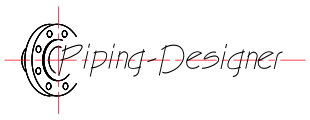Ohnesorge Number
Ohnesorge Number formula |
||
|
\( Oh \;=\; \dfrac{ \mu }{ \sqrt{ \rho \cdot \sigma \cdot l_c } }\) (Ohnesorge Number) \( \mu \;=\; Oh \cdot \sqrt{ \rho \cdot \sigma \cdot l_c } \) \( \rho \;=\; \dfrac{ \mu^2 }{ Oh^2 \cdot \sigma \cdot l_c }\) \( \sigma \;=\; \dfrac{ \mu^2 }{ Oh^2 \cdot \rho \cdot l_c }\) \( l_c \;=\; \dfrac{ \mu^2 }{ Oh^2 \cdot \rho \cdot \sigma }\) |
||
| Symbol | English | Metric |
| \( Oh \) = Ohnesorge Number | \( dimensionless \) | \( dimensionless \) |
| \( \mu \) (Greek symbol mu) = Fluid Viscosity | \(lbf - sec \;/\; ft^2\) | \( Pa - s \) |
| \( \rho \) (Greek symbol rho) = Fluid Density | \(lbm \;/\; ft^3\) | \(kg \;/\; m^3\) |
| \( \sigma \) (Greek symbol sigma) = Fluid Surface Tension | \(lbf \;/\; ft\) | \(N \;/\; m\) |
| \( l_c \) = Flow Characteristic Length | \( ft \) | \( m \) |
Ohnesorge number, abbreviated as Oh, a dimensionless number, that is used in fluid mechanics to describe the balance between viscous forces and surface tension forces in a fluid flow. It is defined as the ratio of the viscous forces to the surface tension forces.
The Ohnesorge number is used to characterize fluid flows in which surface tension effects are significant, such as the breakup of droplets, the formation of liquid jets, and the spreading of thin films. For small numbers, surface tension dominates and the fluid behaves more like a solid, while for large numbers, viscous forces dominate and the fluid behaves more like a liquid. The value of the Ohnesorge number depends on the properties of the fluid and the size of the flow structure, and it is an important parameter in many applications in engineering, physics, and materials science.
Ohnesorge Number formula |
||
|
\( Oh \;=\; \dfrac{ \sqrt{ We } }{ Re }\) (Ohnesorge Number) \( We \;=\; Oh^2 \cdot Re^2 \) \( Re \;=\; \dfrac{ \sqrt{ We } }{ Oh }\) |
||
| Symbol | English | Metric |
| \( Oh \) = Ohnesorge Number | \( dimensionless \) | \( dimensionless \) |
| \( We \) = Weber Number | \( dimensionless \) | \( dimensionless \) |
| \( Re \) = Reynolds Number | \( dimensionless \) | \( dimensionless \) |

